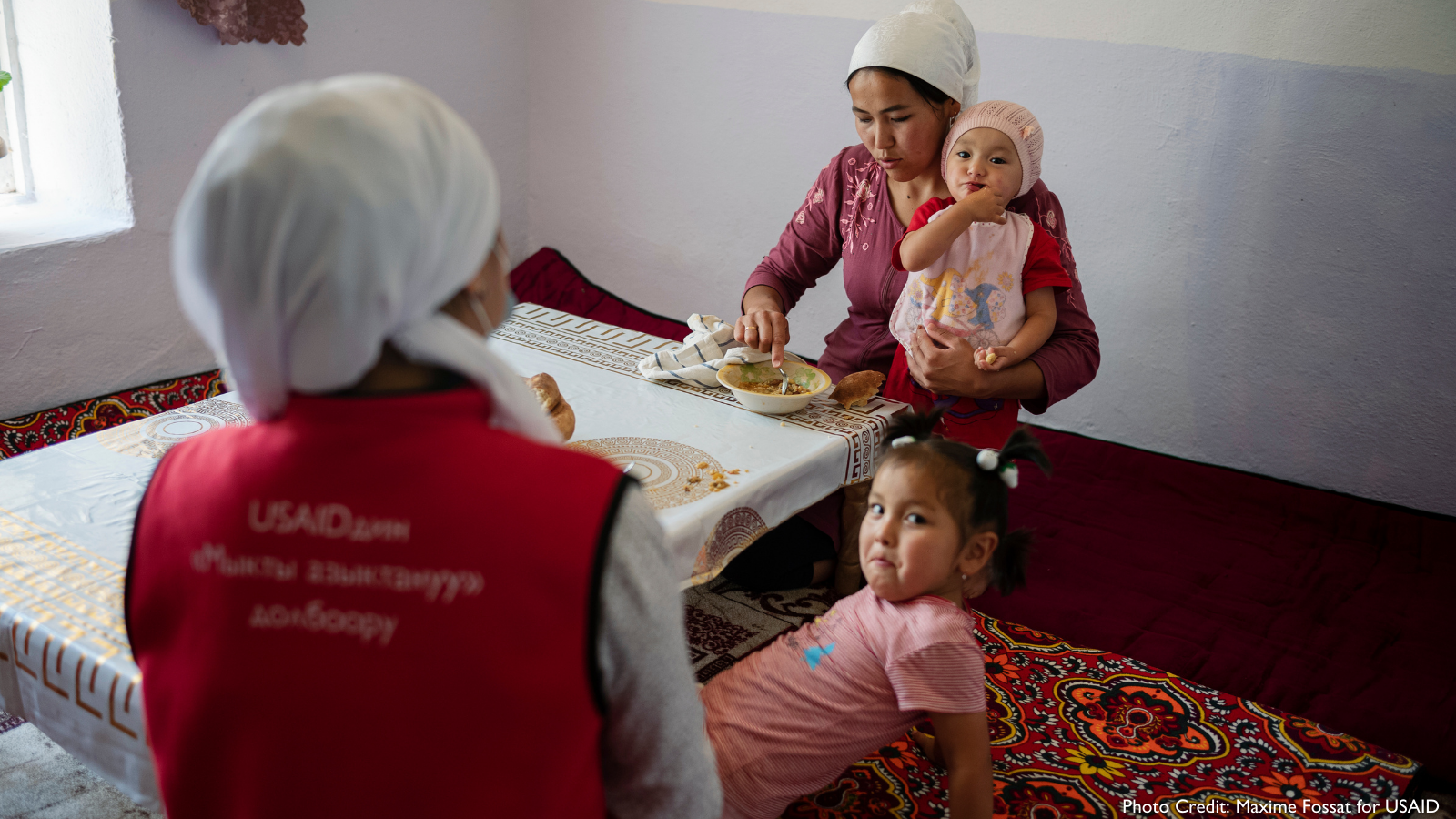Strong governance is critical to improve nutrition in every country.
Government commitment to improve nutrition is essential for improved health outcomes for everyone. Nutrition governance starts with political will and includes coordination across multiple sectors, from health and agriculture to education and finance. It requires sustainable and transparent financing, and mechanisms to monitor and influence decision-making and policy implementation. Strong nutrition governance improves the effectiveness, scale-up, and sustainability of nutrition programming and propels countries toward achieving nutrition goals (learn more).
However, not all countries have sufficient governance and coordination mechanisms in place.

USAID Advancing Nutrition promotes improved nutrition governance through targeted capacity strengthening, technical assistance, development of global guidance.
USAID Advancing Nutrition promotes improved nutrition governance through targeted capacity strengthening, technical assistance, development of global guidance.

Strengthening Tanzania’s Multi-Sectoral Nutrition Action Plan
USAID Advancing Nutrition supported the Government of Tanzania to develop the review of the National Multi-sectoral Nutrition Action Plan (NMNAP) II. We supported the launch and implementation of the NMNAP II by collaborating with the Government of Tanzania to develop critical tools and strategies, such as the Resource Mobilization Strategy and Planning and Budgeting Guidelines for Nutrition-Sensitive Sectors.
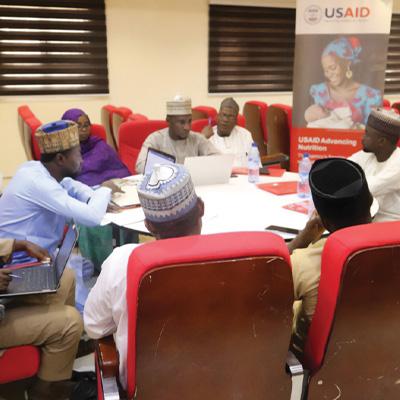
Strengthening Nigeria State Committees for Food and Nutrition
USAID Advancing Nutrition supports improved governance at the state level by supporting the State Committees for Food and Nutrition to understand their mandate, roles, and functions, per the national-level policy, as well as by supporting the committees to identify their priorities and activities to achieve their goals.

Operationalizing Multi-Sectoral Nutrition Policies across Different Levels of Government in Kenya
USAID Advancing Nutrition led a first-of-its-kind multi-sectoral nutrition co-creation initiative in Kenya in 2021 that brought together partners from across the health, agriculture, social protection, and education sectors to develop a joint action plan for nutrition at the national level as well as the counties of Kakamega, Kisumu and Kitui. Led by the Ministry of Health and county nutrition coordinators, we facilitated four workshops with national leadership as well as representatives from the county governments.

Data Dashboard Tracks Key Multi-Sectoral Nutrition Indicators in Burkina Faso
In Burkina Faso, USAID Advancing Nutrition supported the government as it developed a monitoring and evaluation tool to enable three focus regions to track key indicators from the country’s Multi-Sectoral Nutrition Strategic Plan 2020-2024. The dashboard will help monitor the plan’s implementation progress, allowing periodic evaluation of multi-sectoral nutrition interventions at the regional level. This will guide decision-making by Regional Nutrition Councils, who are responsible for the regional-level oversight and monitoring of multi-sectoral nutrition programming.

Organizing Multi-Sectoral Support for Health and Nutrition in Honduras
In Honduras, USAID Advancing Nutrition supports mesas intersectoriales municipales (municipal intersectoral councils) to strengthen collaboration and coordination. With the project's support, these councils now include representatives from the health, education, and other sectors, and are better able to respond to the most pressing nutrition needs in their communities.
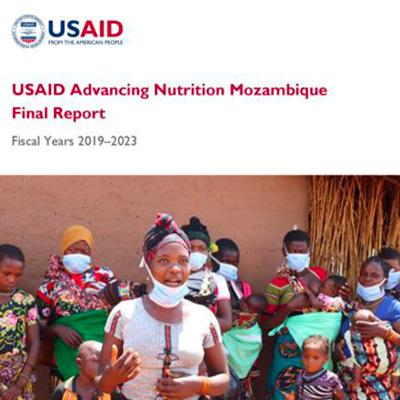
Strengthening Systems and Capacity to Plan and Manage Multi-Sectoral Nutrition in Mozambique
USAID Advancing Nutrition worked with provincial and district authorities in Mozambique’s Nampula Province to strengthen and/or establish 19 district-level multi-sectoral coordination structures; provided technical support on multi-sectoral coordination at the provincial level; and trained high-level government officials in food and nutrition security policies and strategies. As a result of the efforts, the government has stronger systems and capacity to plan and manage multi-sectoral nutrition programming. These gains are critical in long-term strategy to reduce malnutrition.

Coordination and collaboration is an important part of good governance and must be continually measured for shared learning.
USAID Advancing Nutrition is helping build the evidence base to strengthen coordination and collaboration across sectors to address malnutrition.
Coordination and collaboration is an important part of good governance and must be continually measured for shared learning.
USAID Advancing Nutrition is helping build the evidence base to strengthen coordination and collaboration across sectors to address malnutrition.
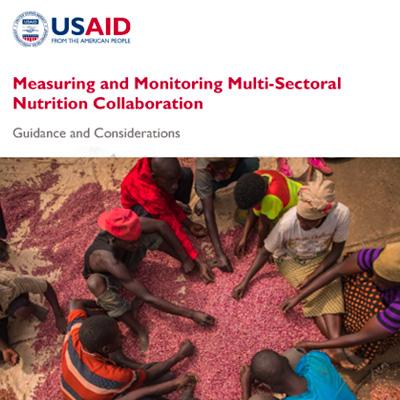
Measuring and Monitoring Multi-Sectoral Nutrition Collaboration: Guidance and Considerations
Collaboration across partners working in different sectors is integral to improving nutrition outcomes. USAID Advancing Nutrition developed guidance for USAID Missions and implementing partners to monitor collaboration as part of multi-sectoral nutrition projects. Missions and partners can document and evaluate their collaboration at both the activity and portfolio levels across five collaboration goals: networking, cooperation, coordination, coalition, and integration.

Strengthening the Continuum of Care for Wasting Management in the Democratic Republic of the Congo
USAID Advancing Nutrition led a facilitated learning activity on purposeful co-location of nutrition partners in four provinces in the DRC. This activity documented partners’ experiences collaborating to deliver services along the continuum of care for wasting to strengthen future collaboration and included broad engagement with the government and other partners. Additionally, the large numbers of children with severe wasting have led to an increased demand for ready-to-use therapeutic food (RUTF), the product used to treat children in outpatient care. As part of efforts to understand and document the last mile delivery of this lifesaving product to health facilities in the DRC, USAID Advancing Nutrition studied four U.S. Agency for International Development (USAID)-supported RUTF pipelines.

Sustainable nutrition financing is critical to achieving good outcomes.
USAID Advancing Nutrition is supporting efforts to ensure countries have systems to support adequate budget planning, allocation, and monitoring.
Sustainable nutrition financing is critical to achieving good outcomes.
USAID Advancing Nutrition is supporting efforts to ensure countries have systems to support adequate budget planning, allocation, and monitoring.
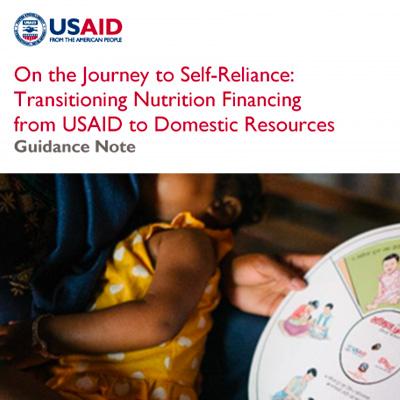
On the Journey to Self-Reliance: Transitioning Nutrition Financing from USAID to Domestic Resources
This guidance provides recommendations for USAID to establish practices to improve the long-term sustainability of USAID nutrition programming by transitioning investments to domestic plans and resources. It includes a theoretical framework for sustainable financing for nutrition and guidance on how USAID Missions and implementing partners can work toward ensuring that USAID nutrition activities can be transferred to local sustainable financing.

Supporting the Scaling Up Nutrition (SUN) Donor Network and Nutrition Resource Tracking
USAID Advancing Nutrition supports the SUN Donor Network to galvanize more and more accurate, specific, and transparent methods for tracking and reporting investments in global nutrition. The project strengthens donor resource tracking by monitoring the application of the Organization for Economic Co-operation and Development (OECD) nutrition policy marker (NPM). USAID Advancing Nutrition provides technical assistance, along with annual data reviews and recommendations on the quantification and interpretation of the NPM.

Multi-Sectoral Nutrition Governance Resource Bank
While tools and guidance to support strengthening multi-sectoral nutrition governance exist, they are not easily accessible in a single location. USAID Advancing Nutrition’s Multi-Sectoral Nutrition Governance Resource Bank presents existing resources in a user-friendly online tool to support programming related to leadership, coordination, communication, planning, budgeting, and more.
Continued Learning
USAID Advancing Nutrition documents lessons learned from working with partner countries to continue to support strong multi-sectoral nutrition governance and coordination where we work. Learn more about the countries we support.
